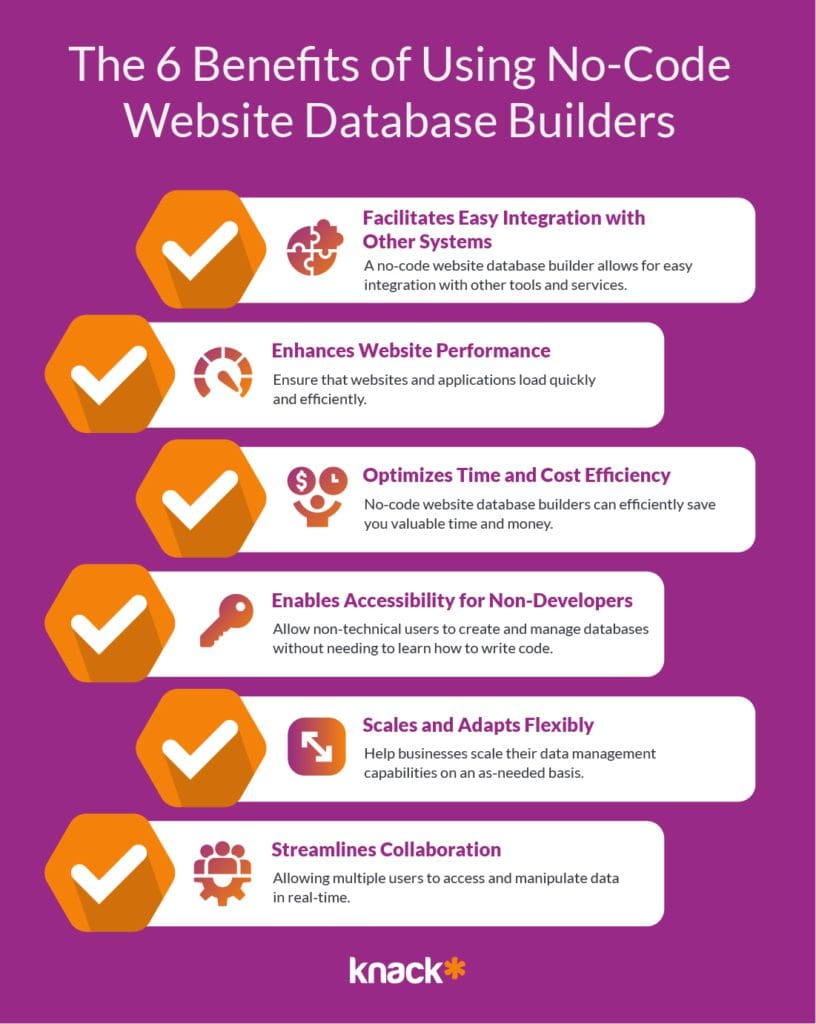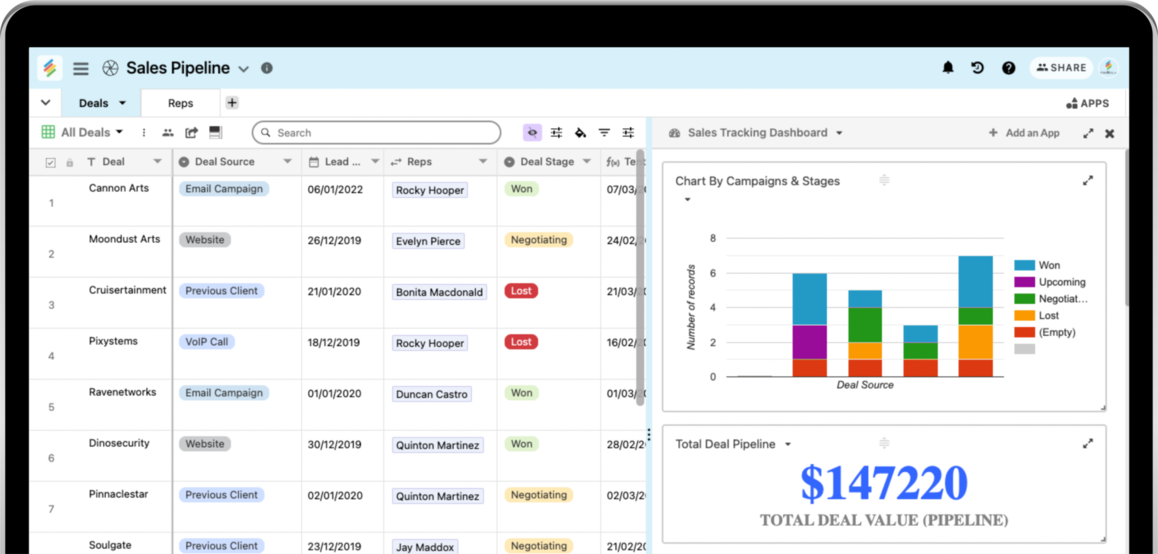Open the Power of No-Code for Open System Data Source Development
Open the Power of No-Code for Open System Data Source Development
Blog Article
A Comprehensive Guide to Implementing Scalable Data Sources Without the Need for Coding Knowledge
In the modern landscape of data monitoring, the capability to carry out scalable data sources without coding knowledge is ending up being increasingly essential for organizations of all dimensions. This overview intends to light up the procedure, concentrating on straightforward tools and instinctive user interfaces that demystify data source setup. By analyzing vital attributes, efficient strategies for execution, and best methods for ongoing monitoring, we will deal with how also non-technical customers can with confidence navigate this complicated surface. What are the critical components that can genuinely empower these users to take advantage of scalable databases effectively? The responses may redefine your approach to information administration.
Recognizing Scalable Data Sources
In the world of modern information management, scalable data sources have become an important solution for companies seeking to handle increasing volumes of details successfully. These data sources are created to fit development by permitting for the seamless addition of resources, whether via straight scaling (including much more equipments) or vertical scaling (upgrading existing makers) This flexibility is crucial in today's busy digital landscape, where information is generated at an unprecedented price.
Scalable databases typically utilize distributed architectures, which enable data to be spread across multiple nodes. This circulation not only enhances efficiency however also supplies redundancy, guaranteeing data schedule even in the event of hardware failures. Scalability can be a vital variable for various applications, including shopping systems, social media sites networks, and large information analytics, where customer demand can rise and fall considerably.
Moreover, scalable databases typically feature robust information consistency models that stabilize performance and integrity. Organizations has to consider their particular needs, such as read and compose speeds, information stability, and mistake resistance when choosing a scalable data source remedy. Eventually, recognizing the underlying concepts of scalable databases is essential for organizations intending to flourish in a significantly data-driven world.
Secret Attributes to Seek
When reviewing scalable data sources, numerous key attributes are paramount to ensuring ideal efficiency and reliability. Firstly, think about the style of the database. A dispersed architecture can enhance scalability by enabling information to be saved across numerous nodes, promoting seamless data access and processing as demand increases.
Another important function is data partitioning, which enables reliable monitoring of huge datasets by dividing them into smaller, much more convenient items (no-code). This method not only boosts performance yet likewise streamlines resource allowance
Furthermore, try to find durable replication capabilities. This attribute makes sure information redundancy and high availability, lessening downtime throughout upkeep or unforeseen failings.
Performance tracking tools are also vital, as they offer real-time insights into system health and functional effectiveness, permitting for prompt modifications to keep ideal performance.

User-Friendly Database Devices
Simpleness is a crucial aspect in the design of user-friendly database tools, as it enhances access for users with differing levels of technical competence. no-code. These tools prioritize instinctive interfaces, enabling customers to produce, take care of, and query databases without needing considerable programming understanding
Secret functions commonly consist of drag-and-drop functionality, aesthetic data modeling, and pre-built themes that simplify the setup process. Such tools often offer assisted tutorials or onboarding processes that assist in customer involvement and lower the discovering curve. Additionally, smooth assimilation with prominent data sources and solutions ensures that users can conveniently import and export information, further simplifying procedures.

Moreover, durable support and area sources, such as forums and documents, improve the user experience by offering assistance when needed. On the whole, easy to use database tools equip companies to harness the power of scalable data sources, making data management obtainable to every person involved.
Step-by-Step Implementation Overview
Exactly how can organizations effectively execute scalable data sources to satisfy their growing information demands? The process begins with recognizing certain information needs, consisting of the quantity, range, and rate of information that will certainly be processed. Next check these guys out off, companies need to assess easy to use database tools that use scalability functions, such as cloud-based remedies or took care of database solutions.
When the best device is picked, the following step includes setting up the database atmosphere. This includes establishing circumstances, specifying user consents, and developing have a peek at these guys information frameworks that straighten with business purposes. Organizations ought to after that migrate existing information into the new system, guaranteeing information integrity and very little disruption to operations.
Post-migration, performing complete testing is vital; this consists of efficiency testing under various tons problems to make sure the system can take care of future growth - no-code. In addition, it is very important to educate personnel on the data source monitoring user interface to assist in seamless usage
Ideal Practices for Monitoring
Effective monitoring of scalable data sources needs a critical technique that prioritizes ongoing monitoring and optimization. To attain this, companies need to implement durable monitoring tools that supply real-time insights right into database performance metrics, such as query action times, resource application, and transaction throughput. Consistently assessing these metrics can aid recognize traffic jams and locations for renovation.

Regular back-ups and calamity healing plans are important to protect information stability and schedule. Developing a routine for testing these backups will ensure a dependable healing procedure in situation of an unforeseen failing.
Additionally, efficiency tuning need to be a continual procedure. Readjusting indexing techniques, enhancing inquiries, and scaling resourcesâEUR" whether up and down or horizontallyâEUR" will certainly aid maintain ideal performance as use demands advance.
Lastly, promoting a society of understanding sharing among team members will certainly make it possible for constant learning and adjustment, making sure that the monitoring of scalable databases continues to be efficient and effective over time.
Final Thought
To conclude, the implementation of scalable data sources can be effectively achieved without coding know-how through the use of straightforward tools and instinctive user interfaces. By adhering to the laid out techniques for setup, information movement, and efficiency testing, individuals can browse the complexities of database management effortlessly. Stressing finest techniques for recurring maintenance and collaboration more improves the capability to handle scalable databases efficiently in a swiftly progressing data-driven atmosphere.
In the modern landscape of data management, the capability to carry out scalable data sources without coding experience is ending up being significantly essential for companies of all sizes.In the world of modern data administration, scalable data sources have emerged as a crucial option for organizations seeking to handle raising volumes of information effectively.Furthermore, scalable databases frequently include robust information consistency designs that balance performance and dependability.Just how can organizations effectively apply scalable databases to meet their growing data demands? Next, organizations need to evaluate user-friendly click for more info data source devices that supply scalability features, such as cloud-based services or handled database solutions.
Report this page